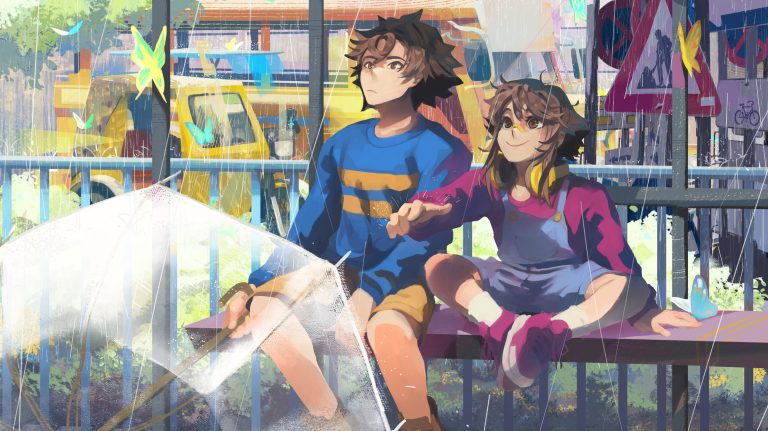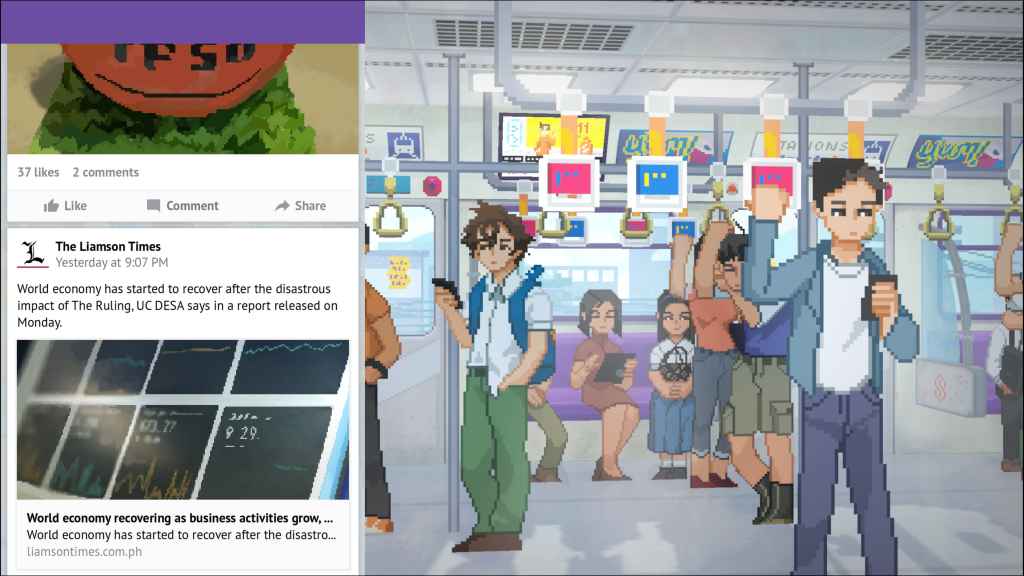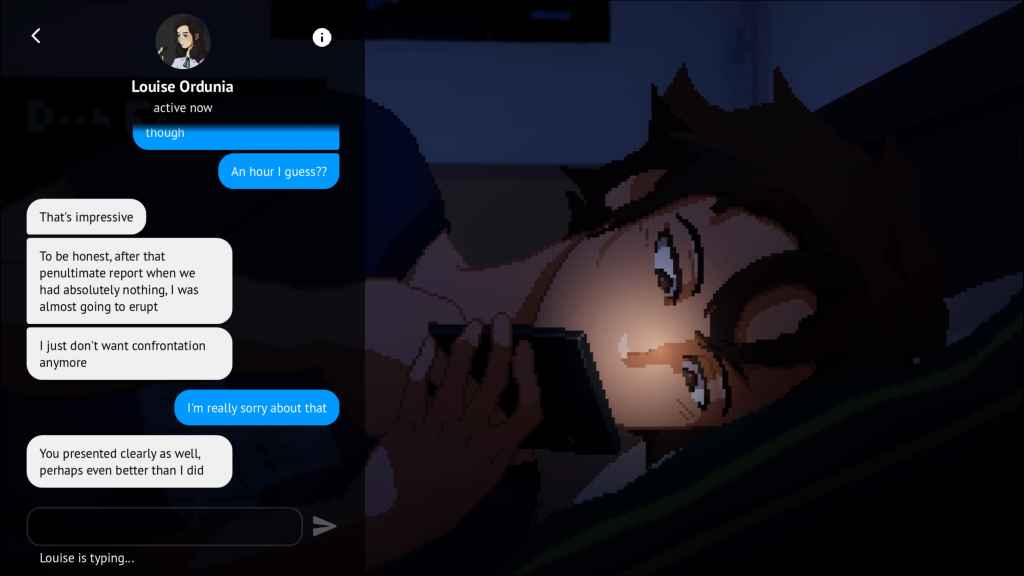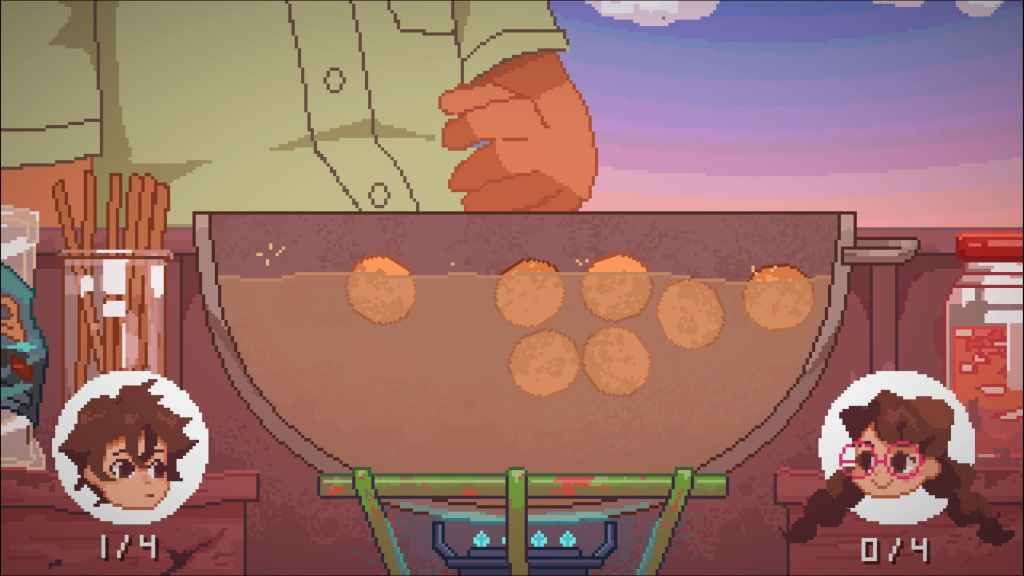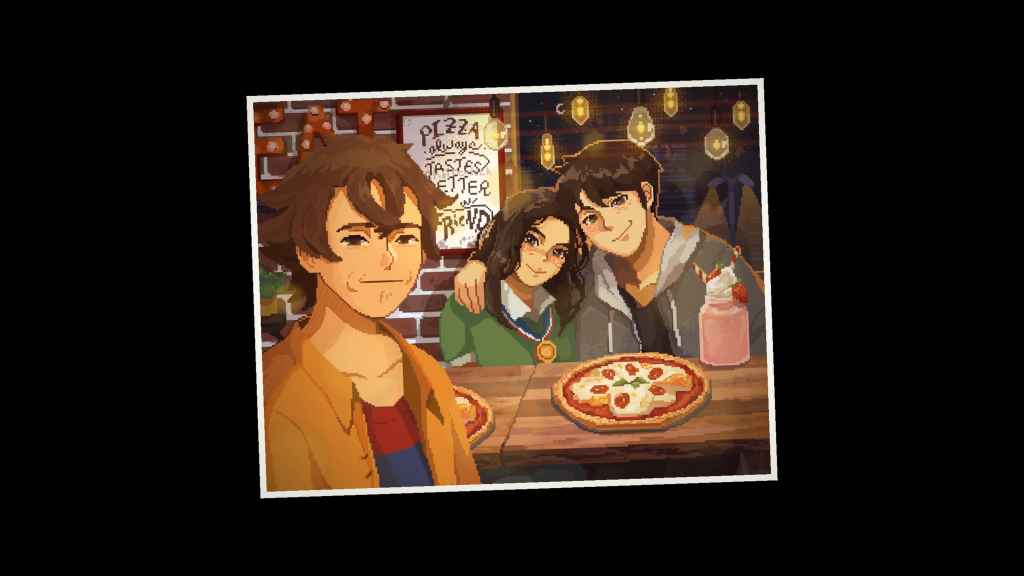Until Then Review (PS5) – Despite the clear cultural parallels to the developers’ own lives in the Philippines, Until Then presents a compellingly relatable story that deals with coming of age and the complex relationships that come alongside it. A distinct visual style and exceptionally creative use of interaction helps to immediately set Until Then apart as a uniquely active visual novel that kept me engaged throughout the modest runtime.
A commitment to this strong realism and immersion means that some moments may outstay their welcome, but this title is one to be taken at a slow pace and not burned through. Until Then wants you to immerse yourself in the detailed world on offer here, and does so with commendable results.
Until Then Review (PS5) – A Heartfelt and Homely High School Adventure
Day to Day Life
In the broadest of strokes, Until Then opens with the high school antics of Mark Borja and his classmates. The opening hour of the game goes about establishing Mark as a hapless slacker with a heart of gold. The oh-so-familiar setting of high school lets us see Mark interact in a natural setting with his friends during “just another day” of his life.
Dynamics are quickly established with some fun moments sprinkled throughout to liven the pace up somewhat. From there, new relationships form and mysteries begin to unfold as the cogs of the story start to turn. While the main thrust of the story does take time to emerge, I enjoyed the slow burn of the story and felt like everything was given the time it needed to breathe, with a few small exceptions.
There’s a real earnestness that permeates the entire narrative of Until Then; high school is far from a new setting for interactive story-focused games to use as their primary location yet Until Then manages to take this setting and make it feel authentic. I appreciated this and it allowed me to invest myself in the struggles of these characters as any drama really did feel like it came from a place of understanding rather than needless melodrama.
Minute-to-minute gameplay takes the form of moving from left to right on 2D plains and interacting with specific objects. Time pressure is never an issue when exploring these luscious environments and you’re encouraged to go out of your way and explore where you can and talk to the people around you. While I can certainly appreciate the lax pace as you move from area to area, I did find myself feeling like some areas were just a little bit too long to be engaged with.
This was especially disappointing as I had my controls lock up after moving from area to area, with the only solution to restart the game from the title screen. This only happened a handful of times, but in a game that really wants you to become immersed in the world, the awkward moments where I had to rip myself out of the world served as a reminder that I was actually playing a game, rather than experiencing the genuinely great story.
Natural Storytelling
Until Then opens with the typical disclaimer that everything depicted within the game is a work of fiction and that any coincidences are absolutely unintentional. This prefaces a game world that is very clearly inspired by the lives of the developers themselves, and the stories that they have lived within that world. While I’m not an expert on the history of the Philippines, much and more of this game’s aesthetic and general framing is set alongside the developer’s own experiences.
This parallel once again brings a strong sense of authenticity to the world and lifts the teenage drama into something far greater than the surface would suggest.
Clever application of the User Interface means that the world can be explored and expanded upon with the curiosity of the player rather than forcing a large amount of exposition into the opening hours and throughout. This primarily takes the form of being able to scroll social media at specific moments of the story. These moments deepen the characters in ways that help them to feel far more integral to the overall experience. No single character feels totally one-note, which is vital for a story as intimate and personal as this.
Social media posts also offer a glimpse into the broader state of the world outside of the story, full of uncertainty and fear that creates a strong tone. There’s certainly something relatable in seeing the grim affairs of local governments and councils before facing your own problems with friends and school.
These broader societal issues serve as a poignant undercurrent for the journey that Mark and Co. embark upon and offer the game an understated feeling of sadness. The issues of the real world are both all around you, yet still feel very far away, firmly capturing the mindset of a real high school student.
Strong Style
Despite being firmly planted in reality, Until Then makes use of an exceptionally stylised pixel art style that effectively communicates the emotions of the characters on screen, with a tremendous number of bespoke animations for specific scenes. Conversations are very rarely bland and are as fun to watch as they are to read.
Small details like Mark blushing when the smart girl in his class sends a text out of the blue, with a close-up of him sweating and nervously glancing at his chat screen sell the perspective of a teenager working stuff out. I couldn’t help but root for the socially awkward protagonist to say what he feels. The only slight oddity came from how over-animated some things can feel.
Characters never stand still. They’re always jostling about in some animation cycle and it ended up being quite distracting during certain scenes. While I don’t expect characters to be stood like statues when they’re idle, some of the animations feel very over-the-top in an otherwise grounded experience.
This style extends to the various minigames throughout the narrative, with a fun selection of simple games to help pass the time. These crop up at specific moments and are neat enough distractions. I enjoyed spearing fish balls out of the fryer, helping Mark to practice the piano and everything in between; each mini-game helps to give the world a sense of vitality and fun that would be otherwise missing, letting us enter the shoes of the teenage spirit.
We all played made-up games with our mates growing up and I got to relive that here – a slightly bittersweet memory.
Leaving an Impact
Ultimately, Until Then is a tough game to talk about in the broadest of scopes. The effectiveness of the story emerges in the slow-paced interactions that develop across the five chapters of the game. And while I may not be able (or want) to speak in detail about how the supernatural comes into proceedings, or how the characters grow and change, I can say that it was a heartening experience from beginning to end.
There is a clear vision at work with this title and the team should be commended for managing to bring it into an experience that especially feels fit for the medium of games. Interactivity is something rarely used well in narrative-focused games and Until Then is a glowing example of what it means to be immersed in atmosphere and story.
Every cringeworthy exchange, every silly decision and every misunderstanding – it all feels human. And that’s what matters most.
Until Then is now available for PS5.
Review code kindly provided by publisher.
